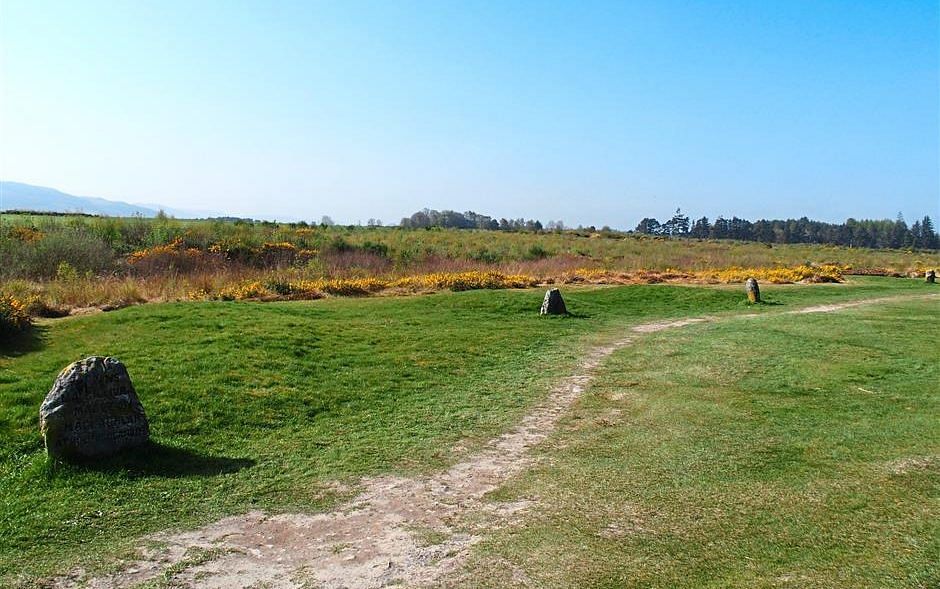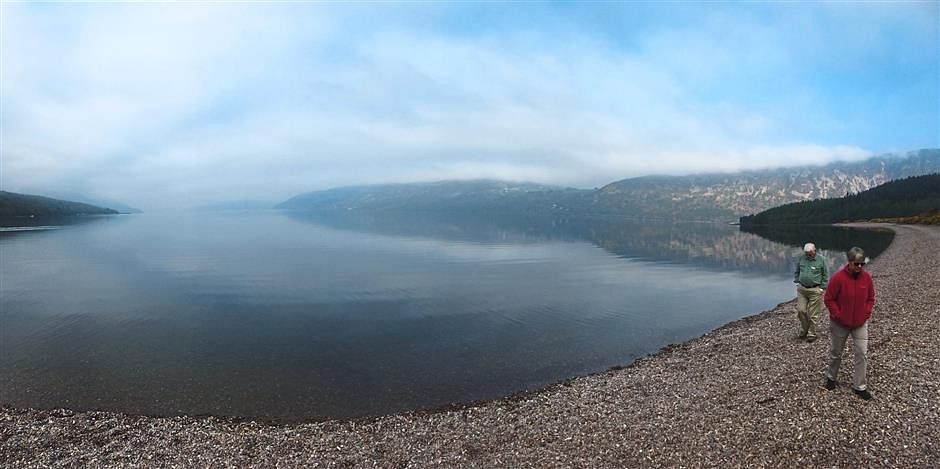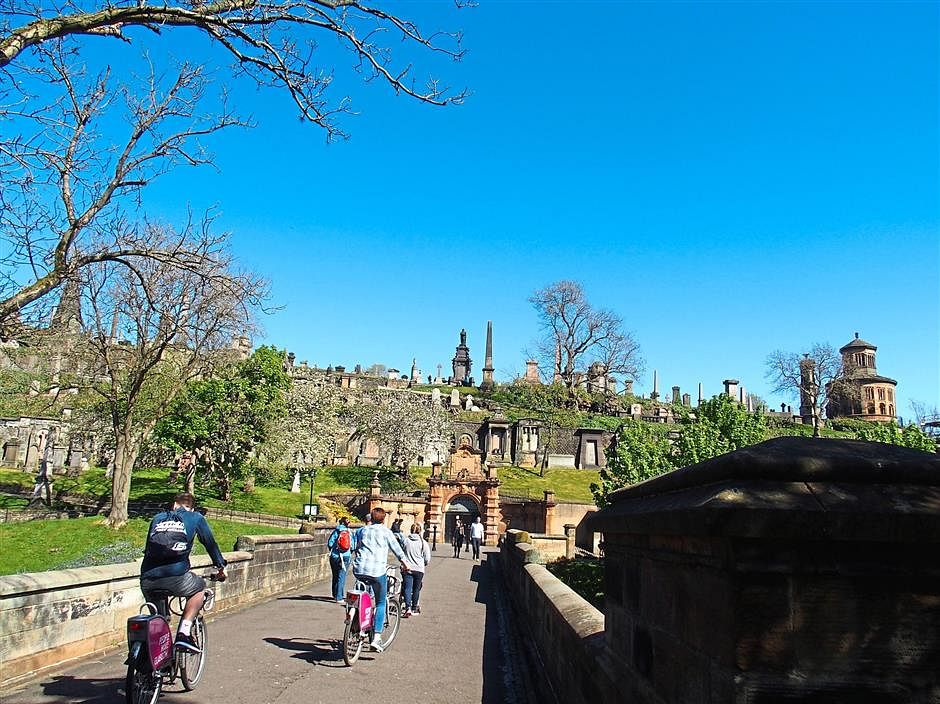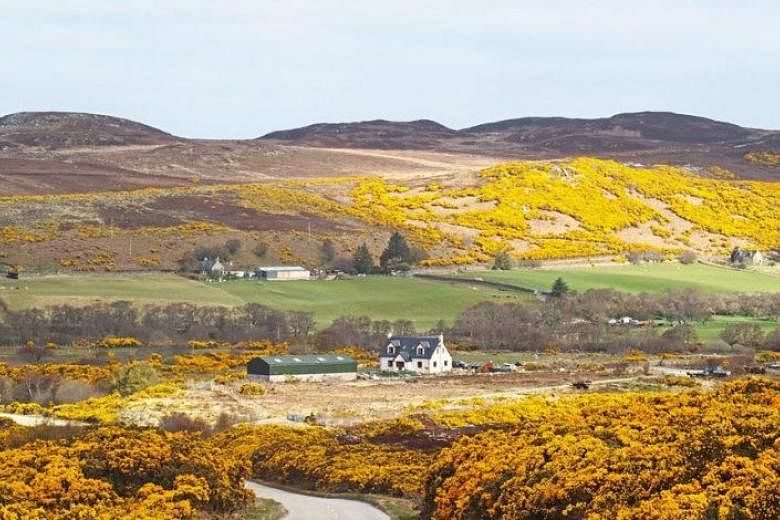(THE STAR/ASIA NEWS NETWORK) - As luck would have it, there were lots of blue skies and sunshine this spring in Scotland, despite the almost daily forecasts of rain, overcast skies and chilly temperatures.
We felt lucky because Scotland is often discounted as a travel destination because of its rather damp and gloomy weather. It was indeed chilly even with the sun out, but the cold only accentuated the haunting beauty of the Scottish highlands' rough and wild terrains.
In spring, Scotland's countryside is a glorious sight to behold, with the bright greens of its valleys and mountains dotted with the brilliant yellow of wild gorse in full bloom. Smell the flowers with their fragrance of coconut oil and switch your kilts for beachwear.
We did not see the iconic Scottish thistles in the wild because it was still early in the season. The closest I got to thistles was a shop sign in Edinburgh that says, "Thistle will do". Guess it would have to do.
Birdies, collies and sheep
Our group started this Country Roads of Scotland tour at the end of April from the Scottish capital city.
Edinburgh is a neat, compact city filled with architectural wonders, rich in history and connections to literary greats.

While it has a garden feel and natural attractions, it was still a cityscape and our country experience started only on the third day of our tour when we made our way through the Firth (Scottish for estuary) of Forth over the Forth Bridge into Fife. As we "un-twisted" our tongues, our eyes met with soon to be familiar landscapes - undulating rich green farmland, craggy cliffs and rocks, and sunny, deep blue skies.
Our first brief stop was at the home of golf, St Andrews, located some 50km away from Edinburgh. The golfers in our group were visibly excited when our VIP coach - with comfy seats and Wi-Fi - parked next to the iconic golf club one chilly morning.
I quickly made my way to the ruins of the St Andrews Castle on the headlands nearby, along the coast of the rough waters of the North Sea. The first castle was built in the late 12th century and destroyed many times as it changed hands between the Scots and the English.

My attention was drawn to a glimpse of spires and I hotfooted over to another set of ruins, St Andrews Cathedral, the largest in Scotland. Its vast graveyard is filled with many interesting tombstones.
We passed many beautiful towns and villages as we headed to Pitlochry.

Our experienced tour director Michael Doughty, who has the gift of the gab (and blarney), informed us that our first excursion was up next, the Blair Castle. Its history dates back to 1269 and involves notable names and events in Scottish history - the Dukes and Earls of Atholl, Mary Queen of Scots, the Civil War and the Jacobite Cause. Learn also why Queen Victoria's second visit in 1844 led to the creation of Britain's only private army - the Atholl Highlanders.
We could not take pictures within the castle, but expect to be wowed and overwhelmed by how beautiful, elaborate and fancy the interiors and the furnishings are, as well as by the stories of its occupants.
From a royal abode, we proceeded to Leault Farm in Kincraig, a sheep farm where we were given a unique and entertaining lesson on how sheepdogs are trained.

There was also a sheep-shearing demonstration.
Top sheep trainer/breeder Neil Ross certainly loves his craft. "I'll do it for nothing," said Ross, whose passion for his craft was evident as he put the eight border collies through their paces in a highly educational yet entertaining demonstration. He also invited us to try our hand at shearing sheep.
Battlefields, hiding places and Scotch
The next day, we had a nice walk along the calm shores of the serene and pretty Loch Ness. The gentle "water horse" Nessie did not come out to greet us though. It did not matter as the scenery was breathtaking.
Back in 1746, an important battle for Scotland took place, which ended on April 16. The Jacobites led by Bonnie Prince Charlie were seeking to restore the Stuart monarchy to the British throne. The Jacobite forces were decimated brutally on the fields of Culloden.

The site of the tragic event is now preserved and so are the mass graves and the Culloden Battlefield.
At the Visitor's Centre, an interactive display takes visitors through this historical event. Visitors end up on the battlefield itself and it is a grim reminder that violence begets violence.
I needed a stiff drink after the history lesson and it so happened that we ended up at the Old Pulteney Distillery in Wick for a tour to see how whisky - or what the Americans call scotch - is made.
Most people might be familiar with blended whisky but connoisseurs know that single malts are a different experience. After an "intoxicating' sniff around the distillery, I savoured my long awaited dram of a 12-year-old Old Pulteney. It was manna from heaven.

Our base for the next two nights was the pretty little town of Thurso, our base to explore the Orkney Islands.
After that, our tour route would cut across stunning, pristine landscapes that include the bogs to the west, for a look at the Isle of Skye. There were more beautiful and glorious vistas to be admired as we ended up at the stunning Loch Lomond.
Our tour ended in Glasgow. The last day was a quick city tour. We saw the remaining parts of the city that have not been bombed out, including one of the most beautiful cemeteries in the world, the Necropolis.

For a long time, Glasgow's reputation was less than savoury, but it has since transformed itself into a city of arts and culture. All the museums in the city do not charge entrance fees.
The Scots are also generous in their food portions and we were well-fed throughout the journey.
My biggest takeaway food-wise is that I tried Scotland's infamous haggis and not only survived the experience, but loved it to bits.
And just like the verdict for the haggis, our tour group pronounced the tour a successful and satisfying one.

